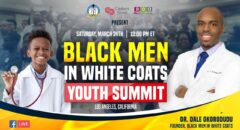
Home to over 10,000 Black residents, Black Wall Street, also known as the Greenwood neighborhood in Tulsa, Oklahoma, was one of the most prominent concentrations of African-American businesses in the United States during the early 20th century.
People would watch movies at the Black-owned Bill Williams Dreamland Theater.
People would shop for their essentials at Black-owned D. L. Hookers General Stores.
People would get treated for health issues at Dr. A. C. Jackson, an African-American Surgeon.
Many people would stay, have meetings and events at the Black-owned Stratford Hotel.
People would get ice cream, cakes and candy at Williams Confectionary.
That is until the massacre. Later called the Tulsa race riot of 1921, white residents massacred hundreds of black residents and torched the neighborhood within hours. The riot was one of the most devastating massacres in the history of U.S. race relations, destroying the once thriving Greenwood community.
Many say the massacre started when a young, Black man, who was getting off the elevator, tripped and grabbed hold of a white woman to keep his balance.
Back in those days it was understood that Black men couldn’t even look at a white woman in the eye, let alone touch her in any way. Rumors spread and white supremacists attacked.
About 10,000 blacks were left homeless, and property damage amounted to more than $1.5 million in real estate and $750,000 in personal property ($30 million in 2017).
Some blacks claimed that policemen had joined the mob; others said that National Guardsmen fired a machine gun into the black community and a plane dropped sticks of dynamite.
In an eyewitness account discovered in 2015, Greenwood attorney Buck Colbert Franklin described watching a dozen or more private planes drop burning balls of turpentine on Greenwood’s rooftops.

The last known survivor of Black Wall Street is Dr. Olivia J. Hooker.
“I think I only went downtown one time,” recalls Hooker of the beauty of her old neighborhood. “Because we had everything we needed right in our neighborhood.”
Today, she is 103 -years-old and resides in White Plains, New York and is a retired professor of Fordham University.
Dr. Hooker was just 6-years-old when the burning of Black Wall Street in Oklahoma occurred. Although, most people see what happened as a riot on Black Wall Street, Dr. Hooker…








